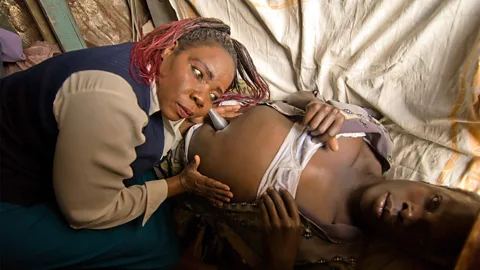Marcie Paul is nervous.
A Democratic activist, Ms Paul has been knocking on hundreds of strangers’ doors, making phone calls and sending out flyers, all in an effort to woo people here to vote for Kamala Harris.
When Harris replaced President Joe Biden as the Democratic candidate in July, Ms Paul was hopeful, as she saw the vice-president go “off like a rocket” in Michigan.
The state is one of three “blue wall” states – along with Pennsylvania and Wisconsin – that went Democrat in 2020, and if won again, would help clinch a presidential victory for Harris.
But with less than a month to go before election day, Harris’s honeymoon period in Michigan could be ending, leaving her pathway to victory less certain. A Quinnipiac poll last week indicated Donald Trump is leading in the swing state by three points.
“To keep that pace for the whole race – even though it’s seriously abbreviated – would be really unrealistic for anyone,” said Ms Paul, a resident of West Bloomfield, Michigan and co-founder of the liberal advocacy group Fems for Dems. “But I thought that we’d be a little more comfortable.”
Ms Paul is among several Democratic organisers and lawmakers in Michigan who say the presidential race here is tighter than expected, even as the Harris campaign appears to be heeding lessons from 2016. Critics say then-Democratic presidential
Up north, immigration and economy take centre stage
Although the state is far from the southern border, Democratic organisers keep hearing that immigration is a top concern for Michigan voters.
“I don’t understand why,” said Ms Paul, the Fems for Dems leader. “It’s just really not relevant for us.”
But the issue has resonated with many of the voters the BBC spoke to, including Mary Beierschmitt of Novi, Michigan.
“It’s a big issue,” she said, adding that she thought Harris had not handled the situation well as vice-president, when Harris was tasked with finding solutions to tackle the source of migration.
Illegal border crossing reached a record high last year. After the Biden administration enacted asylum restrictions, they fell to their lowest in four years.
Trump has made attacks on Harris’s immigration record a central part of his campaign. His focus has not just been at the southern border, but in midwestern states as well, including Michigan’s neighbour Ohio, where the former president has falsely claimed Haitian immigrants are settling illegally in the town of Springfield and eating residents’ pets.
Voters tend to blame the party in power for their frustrations with national issues like the economy and immigration, even if the Biden administration isn’t solely responsible for the border crisis and the rising cost of living, said Jonathon Hanson, a lecturer at University of Michigan’s Ford School of Public Policy.
“The downside for Harris and Biden is, although they’ve done a lot of things to help the economy recover from a major downturn, it’s a more difficult story to tell politically,” he said.
Trump also may have the upper hand among some swing voters in Michigan because he is more well known than Harris after four years in office and years in the public eye, said Mr Hanson.
Tim and Janet of Novi, Michigan, say they know Trump’s personality well – and they don’t like it. But the independent voters already cast their ballots for Trump because they believe he is better at articulating his policies than Harris.
“I can’t vote for somebody just because it’s a feel-good time,” said Tim, a 75-year-old who declined to share his last name for privacy reasons. “They need to be doing things and have policy initiatives that are going to be beneficial.”
But in the Detroit suburb of Warren, Harris’s new economic policies are swaying independent voter Darrell Sumpter.
The vice-president has laid out a number of economic proposals during her campaign, including a plan to offer first-time home buyers an average of $25,000, and an expansion of the child tax credit.
“I’ve never been able to even afford a house. I’ve been waiting for years,” said Mr Sumpter, 52, who voted for Trump in 2020 and is leaning toward Harris this year.
“I don’t want the country to regress right back to the same state it was with Trump,” he added.


